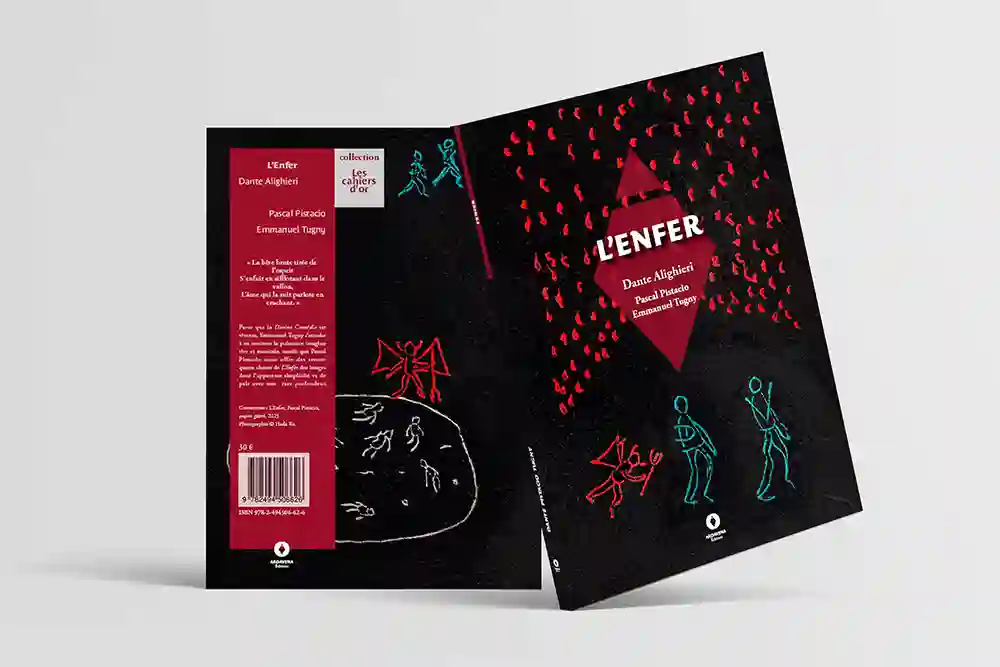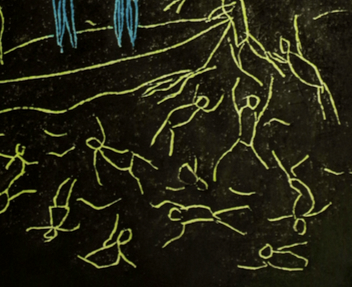The comedy, called divine
The story opens on 8 April 1300. A dark forest and a sinuous road. Full moon and sunrise, almost an eclipse. Dante begins his journey of initiation.
Exiled from Florence, Dante, at the mid-point of his life, 35, is in the throes of self-doubt.
What will he do with him? He comes across three wild beasts (panther, lion and she-wolf) that symbolise modern evils: lust, pride and greed.
These animals also symbolise the political and military powers in place in the 14th century, which were vying to dominate Florence. The Holy German Empire, Venice, Rome and papal power.
He calls on a Master, Virgil, to guide him on his quest. Virgil comes to his rescue and opens the way for him to embark on a journey of initiation, in order to rediscover Love in the guise of the deceased Beatrice who lives in his heart… Crossing the Inferno is the first stage in this journey of discovery.
Pascal Pistacio
INFERNO, DANTE ALIGIERI
En préparation pour début 2025, l’exposition L’Enfer de Dante, papiers gravés et sculptures, 1er tiers de l’intégralité de La Divine Comédie, en cours de réalisation.
Le livre
Release on arch 21, 2024
Illustration of the XXXIV chants Pascal Pistacio
Translation Emmanuel Tugny
Ardavena éditions (Collection Les Cahiers d’or)
Format 27 x 19 cm
To order the book :
https://ardavena.com/lenfer-de-dante-illustre/
To dare to take on the graphic assault of Dante Alighieri’s sublime and masterly work, you have to forget modesty and pride. Beauty and vibrancy are the only things that count.
The miracle of this journey – The Comedy, called divine – is the encounters, the discoveries… another genius, Botticelli.
In the course of my research, I learnt that to produce ‘his’ Comedy, he used a silver-tipped stylus to engrave the 100 parchments and then add colours.
We also meet Emmanuel Tugny, an incandescent lover of the Florentine genius, who makes a luminous, chiselled contribution by translating the tercets that mirror the engraved papers.
Emmanuel Tugny, with the Ardavena publishing house, is at the initiative of this book.
Fragments
Works by Pascal Pistacio
Confronting Dante requires “forgetting modesty and pride”, says Pascal Pistacio from the outset. But it’s a challenge, just as Virgil was a source of inspiration for Dante. Without this sequence, there is no art history.
An element of the tale with a complex narrative structure, chant XXI, suggests :
Et s’il vous plait de pousser plus avant,
Montez jusqu’à cette grotte : on y trouve
Une autre roche qui livre chemin.
(Traduction Emmanuel Tugny)
(And please to push further,
Climb up to this cave, where you’ll find
Another rock that leads the way.)
Which path is it? Where does it lead?
So we assume that the XXI chant is a kind of trigger, a starting point for the art to which this path leads.
The question of support for this has been clarified. It is a cave and a rock, and thus the rock art to which Dante refers.
Paper will be Pascal Pistacio’s creative material in order to create a space of representation, a projection of Dante’s story into another dimension.
He will incise the paper with a “firm and gentle” gesture, as he would on the wall of a cave, the very gesture of the sculptor as he develops it in his usual artistic practice.
“I sculpt blindly,” he explains, until the drawing appears, revealing unexpected shapes. This combination of material and random gesture makes it possible to render “the movement in the fixity that is the object of art” according to Claudel.
The omnipresent movement that animates the figures in rock art and gives them a particular relief.
Such is the case with the abundant forms present in Pascal Pistacio’s etched papers.
They fall, sliding down in a downward movement that echoes Dante’s infernal journey.
The use of dry pastel applied to the paper with a finger produces highly sensual chromatic effects that echo Dante’s pictorial narrative.
Just as the fragility and vulnerability of the human figure is the subject of Pascal Pistacio’s sculptural work. In this series of engravings, he confronts us with the human soul, its torments, the human experience at its most violent, cruel and inhuman.
But art means that “beauty and vibrancy are the only things that count”, he adds. Art, for Baudelaire, is the escape from hell and evil, the gateway to the infinite through beauty.
Amélie Pironneau
Art historian
Exhibition curator
Engraved paper

Engraving, architectural term.
Name given to any shallow work of sculpture.
This is what is meant by engraved paper.
As a sculptor, I make a furrow in the paper with a stylus with a rounded tip, so as not to pierce it.
The gesture should be firm and gentle. I sculpt blind, which means that I cut directly into the white or coloured surface and only discover the engraved “line” once I have applied the dry pastel to the surface.
The furrow, the drawing, appears to me once this stage has been completed. The colour applied reveals the colour in the furrow. There is no room for repentance, and as in life, surprises abound.
It’s paper and chance that do the dancing.
The particularity of this technique, its strength and beauty, is that it gives an impression of relief, as with sculpture (in the classical sense).
When you move around the surface, which appears flat, the light that vibrates in the incisions in the paper, with the interplay of shapes and colours, gives you a feeling of animation, of life.
Dry pastel, a volatile and capricious material, is like pollen: every last grain sticks.
I work with my fingers and massage the paper, allowing the colour to penetrate. This practice is sensual.
By using the rudimentary means of this technique, I feel an organic fraternity with our ancestors who engraved caves and rock faces. Emotion when, in Canto XX of Inferno, near Mantua where Virgil was born, Dante speaks of Valcamonica, a place of rock art treasures !
Painted plaster 2024

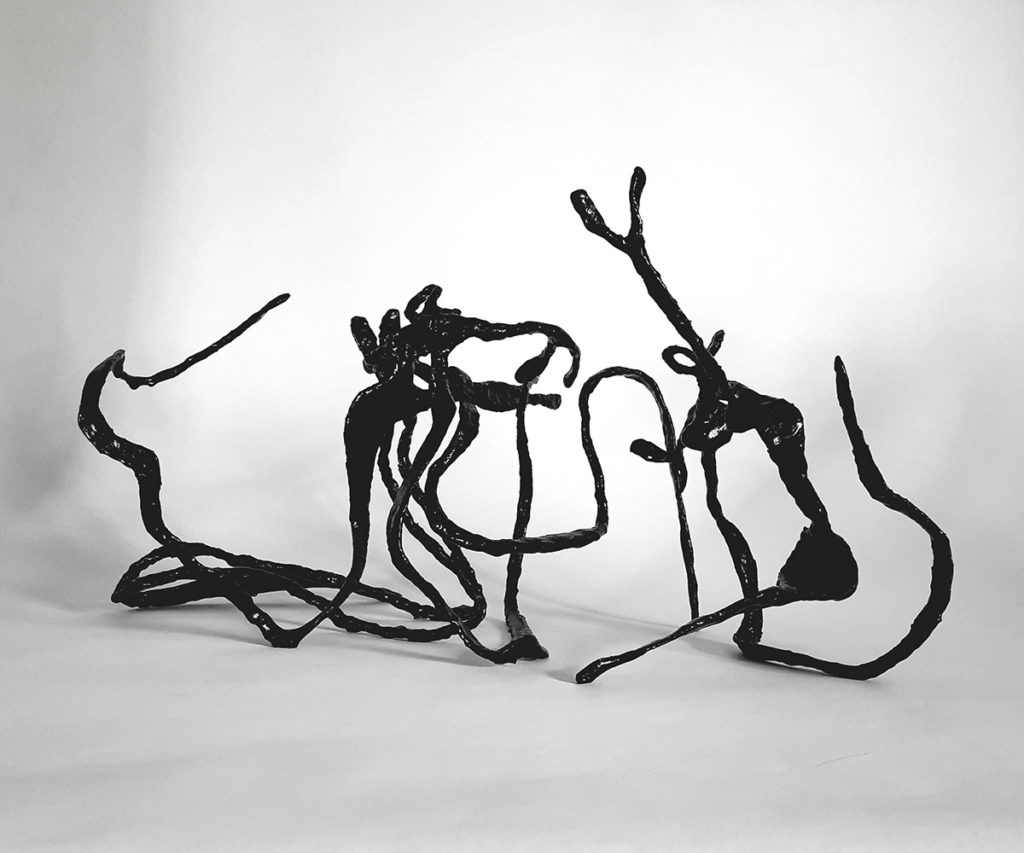
Les rampants du Styx.
Group of 3.
Painted plaster,
25 x 47 x 31 cm.

25 x 25 x 20 cm.

20 x 35 x 22 cm.
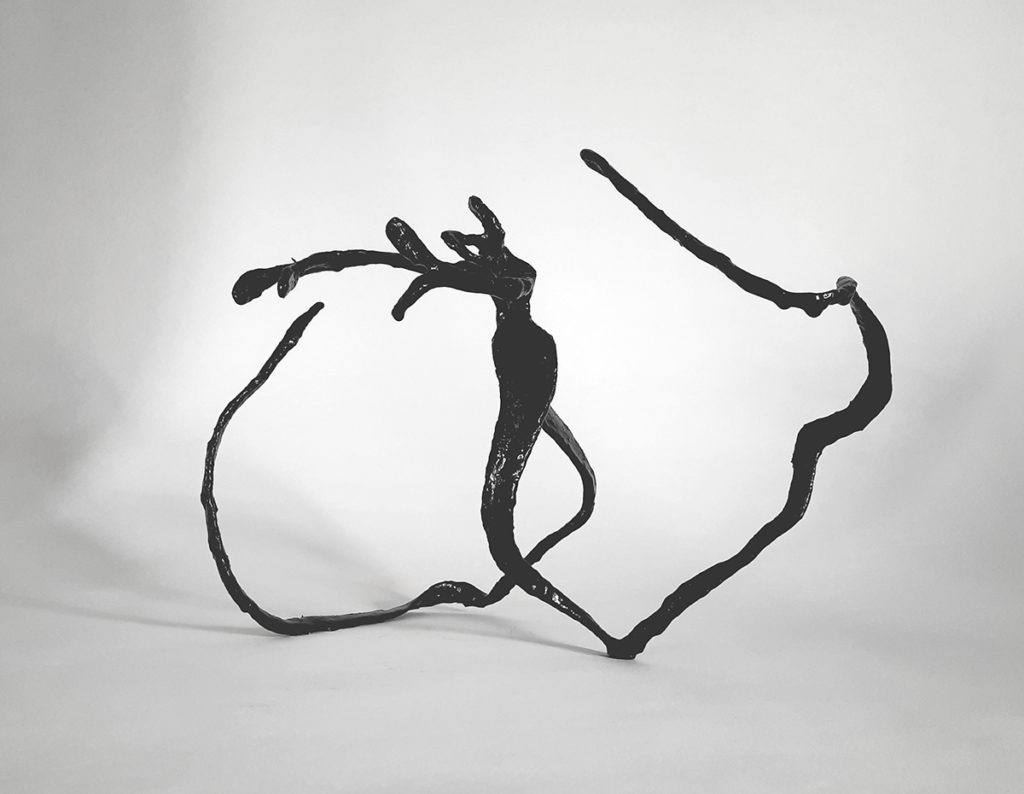
20 x 25 x 20 cm.
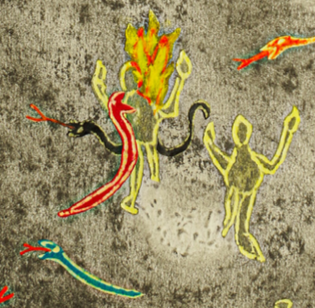
CANTO XXIV
Eighth circle – Bolge 7 – The thieves
Stung by the snakes, the body of the damned catches fire, turns to ash and is reincarnated. The process is perpetually renewed, as with the Phoenix. Death and “reincarnation” of the thief Vanni Fucci, who provocatively makes the obscene gesture of eating a fig.
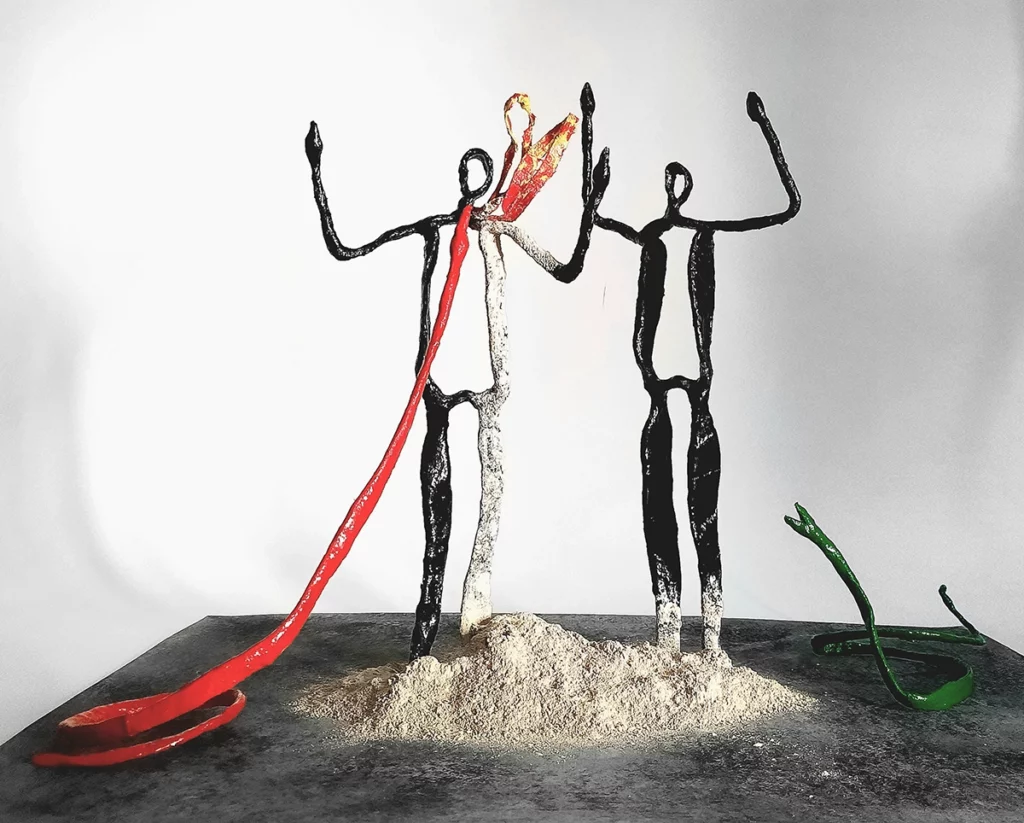
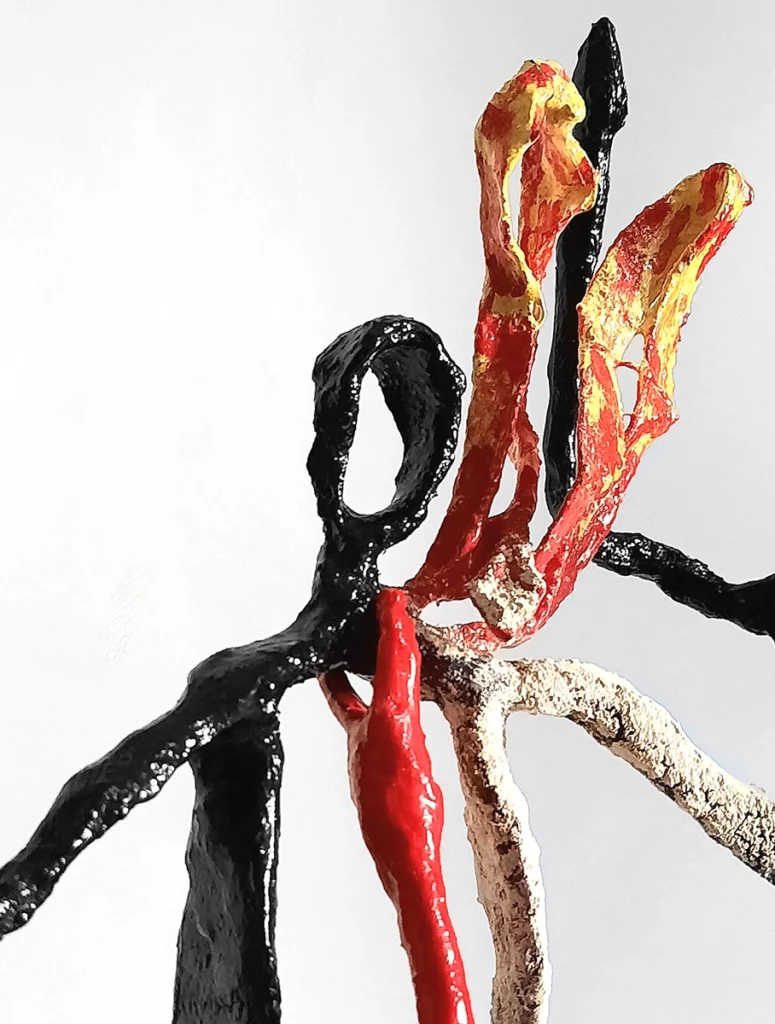
Death and ‘Reincarnation’.
Group of 4 pieces and green clay as ash.
Painted plaster,
45,5 x 65 x 44 cm.
CANTO XXVIII
Eighth circle – Bolge 9 – The troublemakers
Bodies mutilated, disembowelled by a demon. The wounds close, the sword splits them open again.
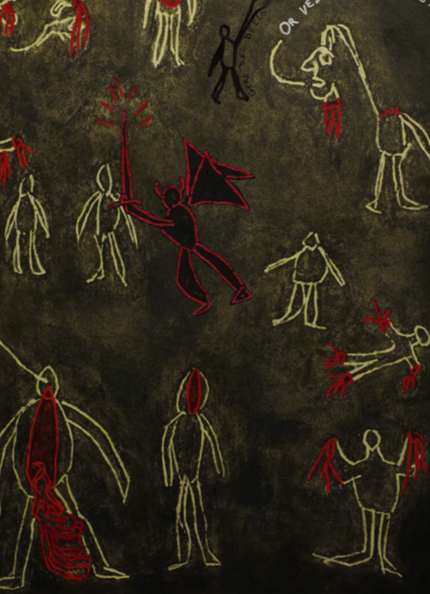
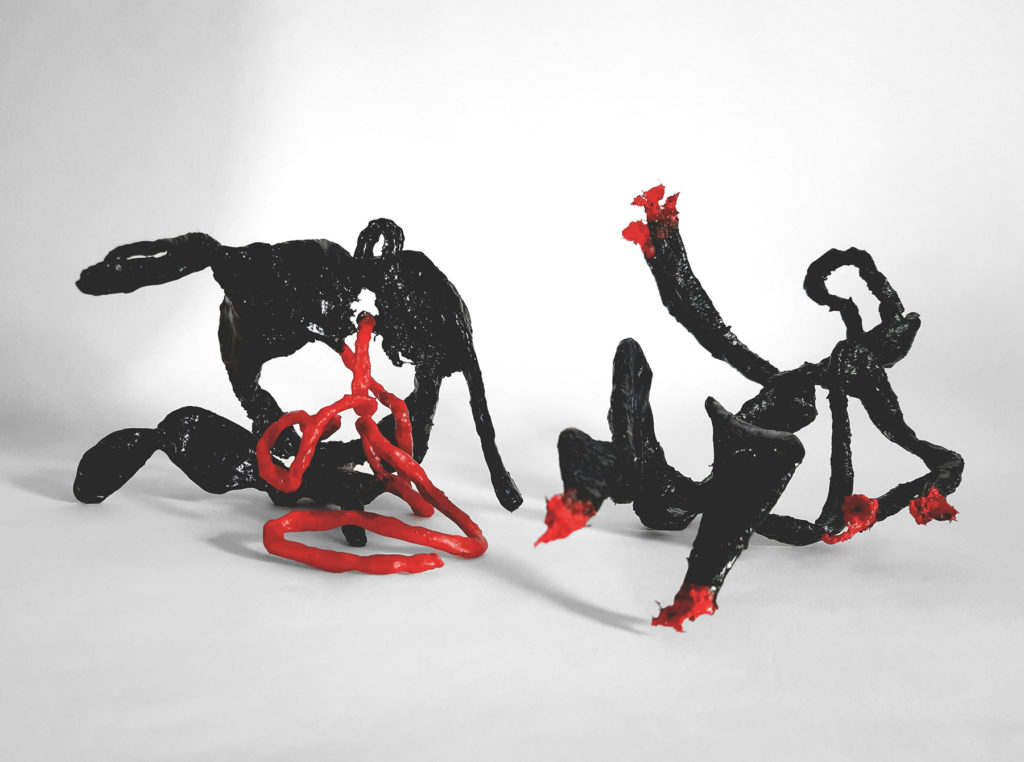
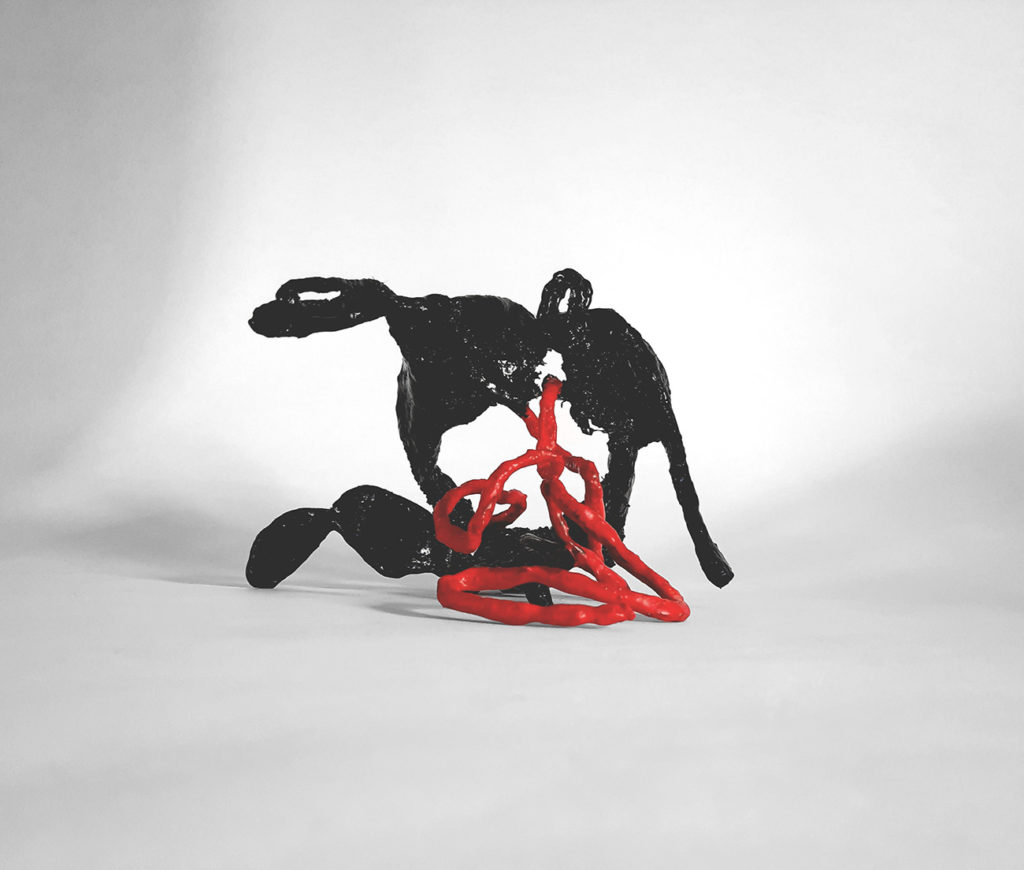
Disemboweled.
Painted plaster,
12 x 18 x 17 cm.
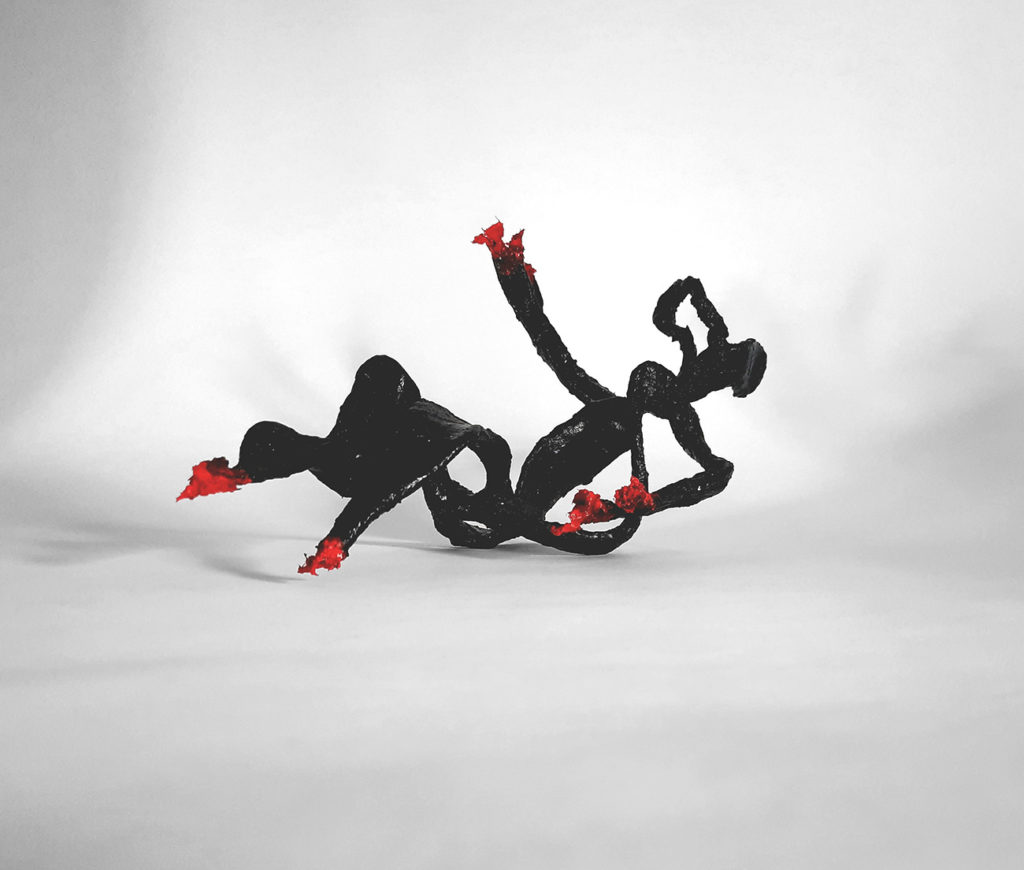
Mutilated.
Painted plaster,
15 x 30 x 19 cm.
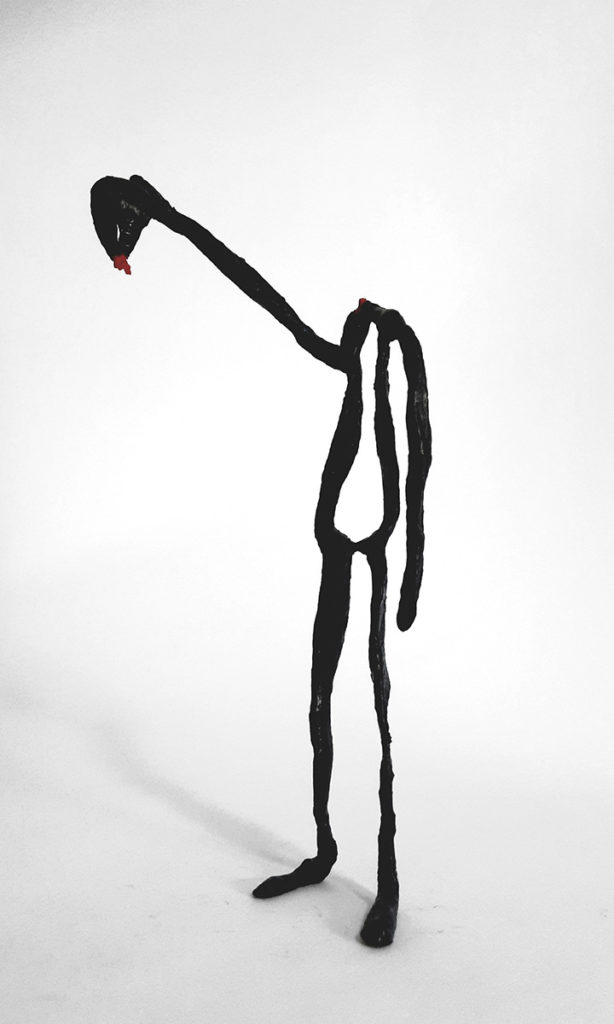

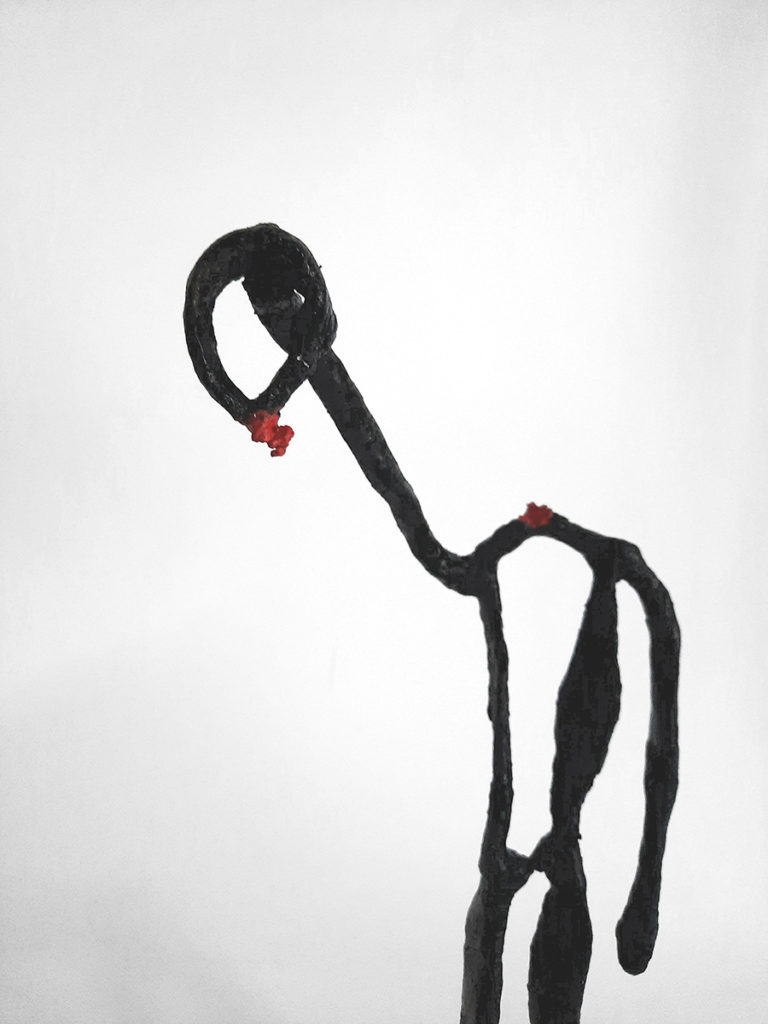
Decapitated.
Painted plaster,
38 x 19 x 11 cm.

